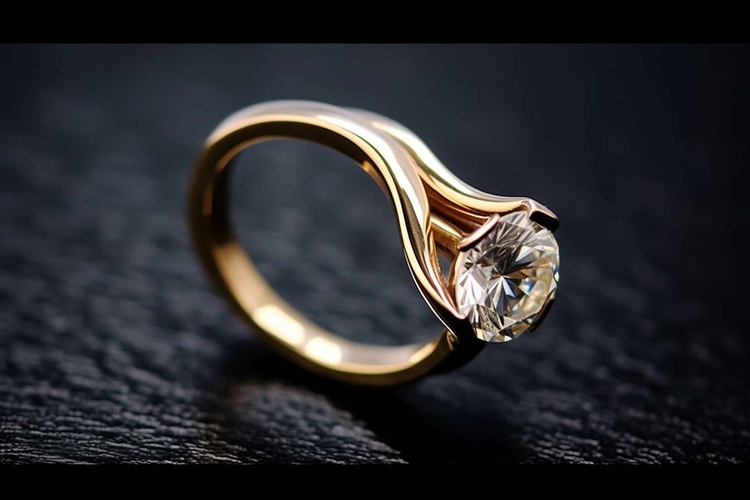Explore helpful tips on choosing Victorian engagement rings
Victorian engagement rings represent a timeless era of romantic elegance and intricate craftsmanship that continues to captivate couples today. These stunning pieces, originating from Queen Victoria's reign (1837-1901), showcase distinctive design elements that set them apart from modern ring styles. Understanding the unique characteristics, materials, and symbolic meanings behind Victorian rings helps ensure you select a piece that perfectly captures your love story while honoring this remarkable historical period.

Victorian engagement rings embody the romance and sophistication of an era defined by Queen Victoria’s enduring love for Prince Albert. These exquisite pieces reflect the artistic movements and cultural values of the 19th century, making them increasingly popular among couples seeking something truly distinctive for their engagement.
Discover Essential Design Features of Victorian Rings
Victorian engagement rings showcase several distinctive design characteristics that define their timeless appeal. The most recognizable feature is the cluster setting, where multiple smaller stones surround a central gemstone, creating a flower-like appearance. Rose-cut diamonds were particularly popular during this period, offering a softer, more romantic sparkle compared to modern brilliant cuts.
Another hallmark of Victorian design is the use of intricate metalwork, including milgrain detailing and filigree patterns. These delicate techniques create texture and visual interest while demonstrating the exceptional skill of period craftsmen. Many Victorian rings also feature low-profile settings that sit close to the finger, making them practical for daily wear while maintaining their elegant appearance.
Learn About Popular Materials in Victorian Jewelry
The Victorian era embraced a diverse range of materials that reflected both availability and symbolic meaning. Yellow gold dominated the early Victorian period, while rose gold gained popularity during the mid-Victorian years. White gold and platinum became more common toward the end of the era, offering a sophisticated backdrop for diamonds and colored gemstones.
Diamonds remained the most prized gemstone, though Victorian jewelers also incorporated sapphires, rubies, emeralds, and pearls into their designs. Semi-precious stones like garnets, amethysts, and turquoise were equally valued, often chosen for their symbolic meanings rather than monetary value. Many Victorian rings feature multiple gemstone types within a single design, creating colorful and meaningful compositions.
Uncover Decorative Motifs and Their Meanings
Victorian jewelry is renowned for its symbolic motifs that conveyed deep emotional messages between lovers. Floral designs dominated the era, with each flower carrying specific meanings: roses for love, forget-me-nots for remembrance, and daisies for innocence. Snake motifs, popularized by Queen Victoria’s own engagement ring, symbolized eternal love and wisdom.
Heart shapes, hands, and crown motifs frequently appeared in Victorian engagement rings, often combined to create the popular Claddagh design representing love, friendship, and loyalty. Birds, butterflies, and other nature-inspired elements also held special significance, with doves representing peace and fidelity. Understanding these symbolic elements helps couples choose rings that align with their personal values and relationship story.
Appreciate Victorian Craftsmanship Techniques
The exceptional craftsmanship of Victorian jewelry reflects the era’s emphasis on handmade artistry and attention to detail. Master jewelers employed techniques like hand-engraving, chasing, and repoussé to create intricate surface decorations that remain unmatched by modern mass-production methods. These artisans often spent weeks or months perfecting a single piece, resulting in heirloom-quality jewelry.
Filigree work, characterized by delicate wire patterns soldered together, became a signature technique of the period. This labor-intensive process created lightweight yet visually complex designs that appeared almost lace-like in their intricacy. The use of seed pearls, tiny gems arranged in patterns or borders, added another layer of sophistication to Victorian pieces while demonstrating the jeweler’s patience and skill.
Make an Informed Choice When Selecting Your Ring
Choosing a Victorian engagement ring requires careful consideration of authenticity, condition, and personal preferences. Authentic Victorian pieces command premium prices due to their historical significance and craftsmanship quality, while Victorian-inspired reproductions offer similar aesthetics at more accessible price points. Working with reputable antique jewelry dealers or certified gemologists ensures you receive accurate information about a ring’s age, provenance, and condition.
Consider your lifestyle when selecting a Victorian ring, as these pieces often feature delicate settings and softer gemstone cuts that may require more careful handling than modern rings. Regular maintenance by experienced jewelers familiar with antique techniques helps preserve these treasures for future generations. Additionally, consider having the ring professionally appraised and insured to protect your investment in this piece of romantic history.
Victorian engagement rings offer couples the opportunity to begin their marriage with a piece that embodies centuries of romantic tradition and exceptional artistry. Whether you choose an authentic antique or a carefully crafted reproduction, these rings serve as daily reminders of an era when love letters were handwritten, courtship was formal, and jewelry was created to last lifetimes. The enduring appeal of Victorian design ensures that your ring will remain as captivating and meaningful decades from now as it is today.


